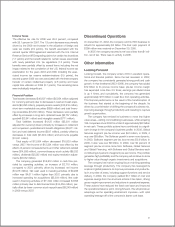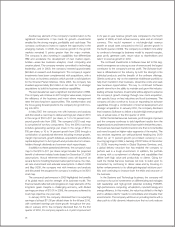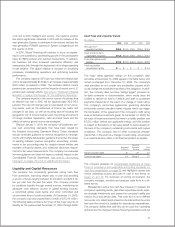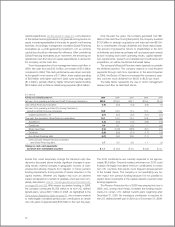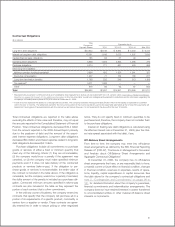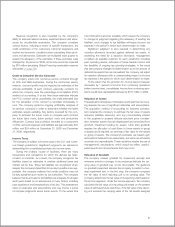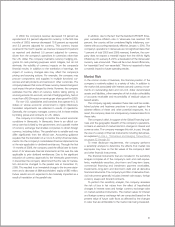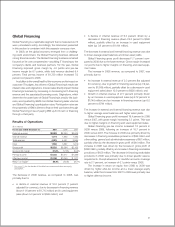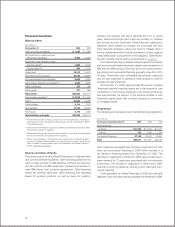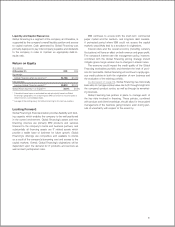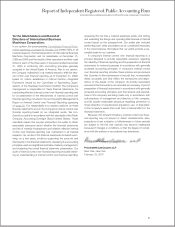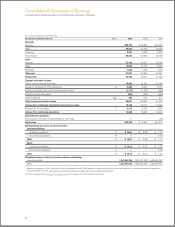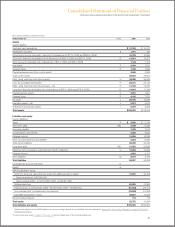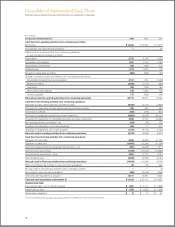IBM 2009 Annual Report Download - page 58
Download and view the complete annual report
Please find page 58 of the 2009 IBM annual report below. You can navigate through the pages in the report by either clicking on the pages listed below, or by using the keyword search tool below to find specific information within the annual report.
The discount rates used for the present value computations
were selected based on market interest and foreign currency
exchange rates in effect at December 31, 2009 and 2008. The
differences in this comparison are the hypothetical gains or
losses associated with each type of risk.
Information provided by the sensitivity analysis does not
necessarily represent the actual changes in fair value that the
company would incur under normal market conditions because,
due to practical limitations, all variables other than the specific
market risk factor are held constant. In addition, the results
of the model are constrained by the fact that certain items
are specifically excluded from the analysis, while the financial
instruments relating to the financing or hedging of those items
are included by definition. Excluded items include short-term
and long-term receivables from sales-type and direct financing
leases, forecasted foreign currency cash flows and the com-
pany’s net investment in foreign operations. As a consequence,
reported changes in the values of some of the financial instru-
ments impacting the results of the sensitivity analysis are not
matched with the offsetting changes in the values of the items
that those instruments are designed to finance or hedge.
The results of the sensitivity analysis at December 31, 2009,
and December 31, 2008, are as follows:
Interest Rate Risk
At December 31, 2009, a 10 percent decrease in the levels of
interest rates with all other variables held constant would result
in a decrease in the fair market value of the company’s financial
instruments of $274 million as compared with a decrease of
$353 million at December 31, 2008. A 10 percent increase in
the levels of interest rates with all other variables held constant
would result in an increase in the fair value of the company’s
financial instruments of $251 million as compared to an increase
of $327 million at December 31, 2008. Changes in the relative
sensitivity of the fair value of the company’s financial instrument
portfolio for these theoretical changes in the level of interest
rates are primarily driven by changes in the company’s debt
maturities, interest rate profile and amount.
Foreign Currency Exchange Rate Risk
At December 31, 2009, a 10 percent weaker U.S. dollar against
foreign currencies, with all other variables held constant, would
result in a decrease in the fair value of the company’s financial
instruments of $609 million as compared with a decrease of
$1,007 million at December 31, 2008. Conversely, a 10 percent
stronger U.S. dollar against foreign currencies, with all other vari-
ables held constant, would result in an increase in the fair value
of the company’s financial instruments of $609 million compared
with an increase of $1,007 million at December 31, 2008.
Financing Risks
See the “Description of Business” on page 24 for a discussion
of the financing risks associated with the Global Financing busi-
ness and management’s actions to mitigate such risks.
Employees and Related Workforce
Yr.-to-Yr. Change
For the year ended December 31: 2009 2008 2007 2009-08 2008-07
IBM/wholly owned subsidiaries 399,409 398,455 386,558 0.2% 3.1%
Less-than-wholly owned subsidiaries 11,421 11,642 11,769 (1.9) (1.1)
Complementary 26,946 27,983 28,642 (3.7) (2.3)
As a globally integrated enterprise, the company operates in
over 170 countries and is continuing to shift its business to the
higher value segments of enterprise computing. The company
continually assesses its resource needs with the objective of
balancing its workforce globally to improve the company’s global
reach and competitiveness. In 2009, total employees at IBM
and its wholly owned subsidiaries increased slightly compared
to the prior year.
The complementary workforce is an approximation of
equivalent full-time employees hired under temporary, part-time
and limited-term employment arrangements to meet specific
business needs in a flexible and cost-effective manner.
56



